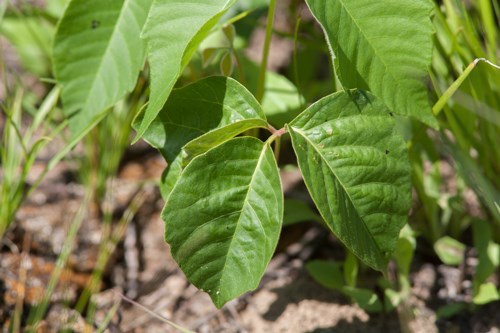
NPS/Gordon Dietzman IntroductionFew plants are as maligned as poison ivy, and with good reason. “Leaves of three, let it be” is a common reminder to that handling poison ivy may lead to a severe dermatitis. Found around edges of forest, including along forest paths, poison ivy is an opportunistic plant that often follows disturbance created by "edge effect." Edge effect is common in fragmented habitat, such as when forests are bisected by roads and paths. Once relatively rare, poison ivy is now common in many forested areas east of the Rocky Mountains. Poison ivy can be difficult to identify as it can grow as an herbaceous ground cover, a shrub, or as a vine. Vines have numerous “hairs” that help it attach to tree trunks, which leads to another old saying “Hairy vine, no friend of mine.” White berries appear in fall leading to another old saying “Berries white, run in fright.” Poison ivy leaves turn red in fall. Touching poison ivy, including leaves, stems and fruits, may cause an allergic reaction whose symptoms include a rash, blisters, and severe itching, usually lasting 1-4 weeks. The rash is caused by urushiol, an oily compound also found in some other plants, such as poison oak. The oil quickly binds to the skin and the resulting contact dermatitis can be quite severe and may require professional treatment. Minor cases are often treated using over the counter medications. There are some indications that breathing smoke, especially from smoldering fires, whose fuel source is partially or fully poison ivy, may cause severe lung irritation. Plants often confused with poison ivy include Virginia creeper (a vine which has five leaves instead of three, but whose leaves also turn red in fall) and Jack-in-the-pulpit which has three leaves, but whose berries are red. The Jack-in-the-pulpit’s unique brown and green blossom can’t be confused with any other species in our area. Fascinating Facts
Find ItPoison ivy is often found along paths and other disturbed areas. It is common throughout the park. Want to Help Us Better Understand the Park?See our iNaturalist project, "The Life of the Mississippi National River and Recreation Area" and contribute to it by downloading the iNaturalist app and uploading your sightings of this species, and others, to the project. You can also upload your sightings from your computer. |
Last updated: March 7, 2018
